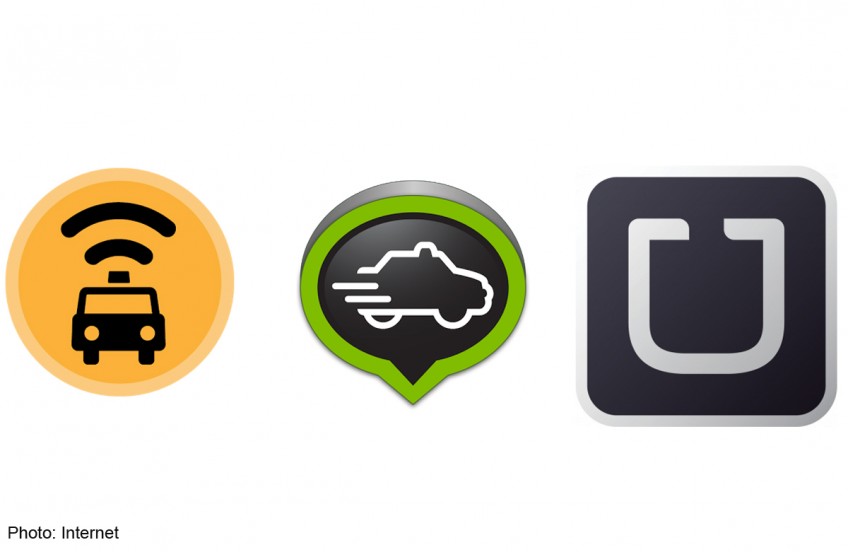Have taxi apps, will travel

If I cannot flag a cab in three minutes, I pull out my phone from my pocket and launch the Grab Taxi app. It uses Foursquare to detect and list popular pick-up locations near me and I just have to tap the right one. If it's not there, I can always switch to the Google Maps tab within the app and key in the address to get it.
Repeat and rinse for my destination, hit the Next button and I will typically get a cab within 30 seconds. If I don't, I try again.
If it fails, then I switch to the Easy Taxi app. Failing that, it's time to use Uber.
So far, I have usually been able to get a cab within five minutes, with the exception of a recent Friday night, when it took me about 20 minutes to get a Mitsubishi Lancer to pick me up at Scotts Road using UberX.
All three apps show me the location of the taxi I have booked and I can immediately view, at a glance and in real time, where the driver is exactly.
He and I have each other's telephone numbers and I can call the driver if I think that he cannot find my location, or vice versa.
I remember when Grab Taxi launched in Singapore more than a year ago. Few taxis used it then. A year later and everything has changed. For taxi drivers from the smaller companies, the taxi apps now offer them a larger customer base, as the apps do not differentiate between companies.
The cab driver only needs to install the driver version of his app to get into the game.
When the app companies were new to the game here, they offered huge bonuses to cab drivers who used their apps, obviously in an effort to gain market share. These bonuses have since shrunk, with the rapid rise in the number of drivers coming on board.
Uber's marketing strategy is to focus on the customer. When I signed up for it, I keyed in a referral code from a colleague. Each of us earned a $10 credit just for that.
Unlike Grab Taxi and Easy Taxi which focus on creating a network of taxis, Uber has its own network of private cars - Uber Exec, a limousine service; and UberX, which uses sedans, such as the Mitsubishi Lancer.
When I used UberX for the first time, I was struck by how friendly the driver was. At the end of the trip, he made a request: "Sir, please rate me on the app."
The rating system is a fabulous and easy way to improve customer service. Some apps also rate the passengers.
So, bad customers who run off after booking a cab may find it harder to get a cab the next time. I am all in support of rating both drivers and passengers.
One of the most common reasons taxi drivers in the past gave for not accepting call bookings, especially at taxi stands at malls, is that rogue passengers would often board another taxi if it came along before the one they had booked arrived.
With taxi booking apps providing real-time locations of the taxi, there is little excuse for passengers to disappear without first cancelling their booking. The rating system, therefore, rewards passengers like me, who will wait faithfully till the cab they booked arrives.
ComfortDelGro lost me as a loyal customer when I discovered that I could get a cab much faster and more reliably through third-party apps than by calling its 6552-1111 hotline or via its own taxi app.
Using such taxi apps has some disadvantages. A few weeks ago, two of my colleagues and I used Grab Taxi to book a cab. The confirmation was quick. However, the cab was anything but.
It turned out that the driver was at 998 Toa Payoh North and had no idea how to get to 1000 Toa Payoh North, where we were waiting. We could see him driving hither and thither and, after a long conversation to provide turn-by-turn directions, he found his way to Singapore Press Holdings, a building which has been here for more than a dozen years. He grumbled for a few minutes more about not being given more precise directions in the booking.
This was an exception, Overall, my experience has been positive.
I never thought these third-party apps would take off, given the domination of ComfortDelGro. However, I have been proven wrong, as once again, technology proves a huge disruptor of existing business models and a leveller of the playing field.
Cab drivers from smaller companies no longer lose out on taxi bookings because of their smaller fleet size. In the world of apps, every taxi is the same.
ginlee@sph.com.sg
This article was published on Aug 27 in Digital Life, The Straits Times.
Get a copy of Digital Life, The Straits Times or go to straitstimes.com for more stories.